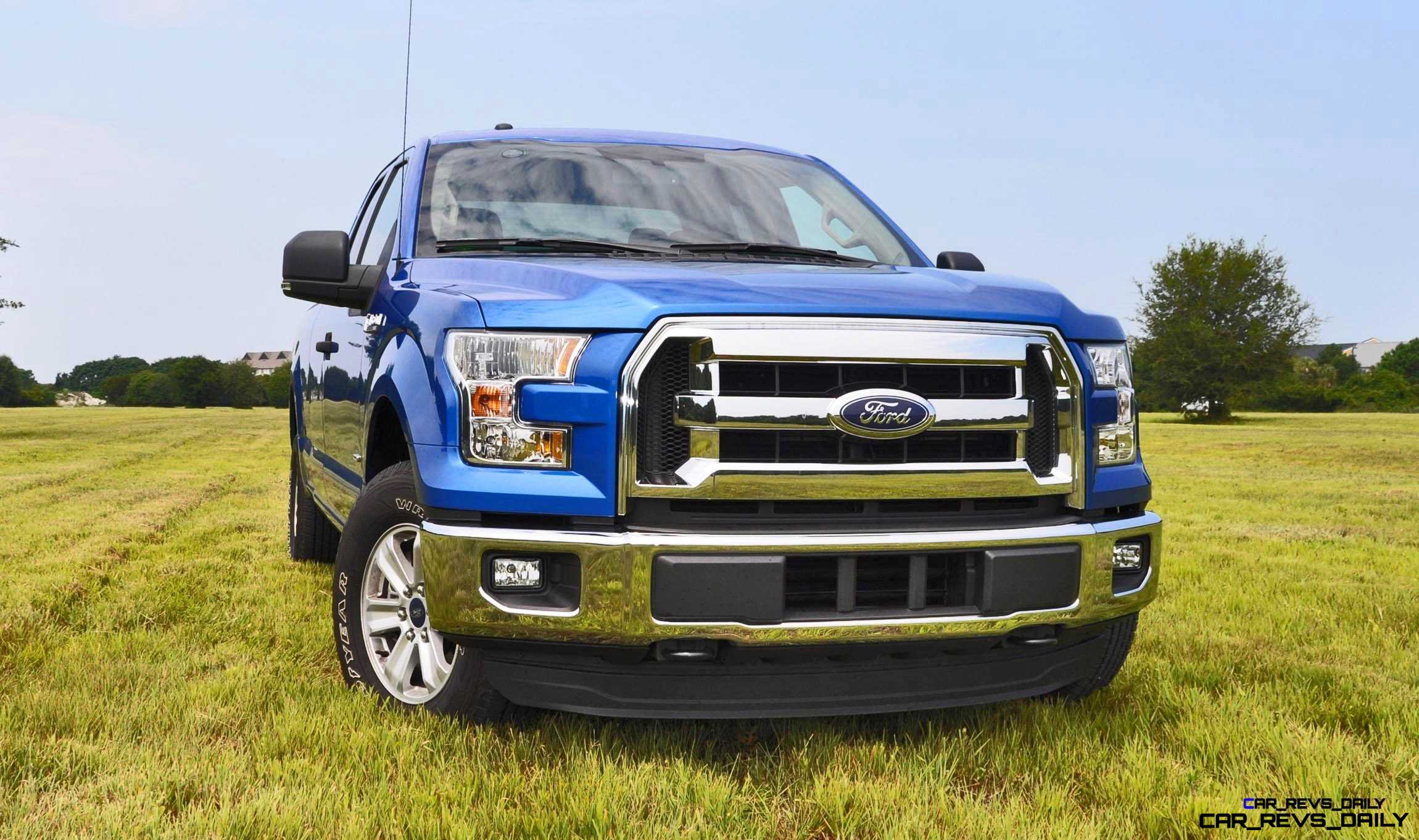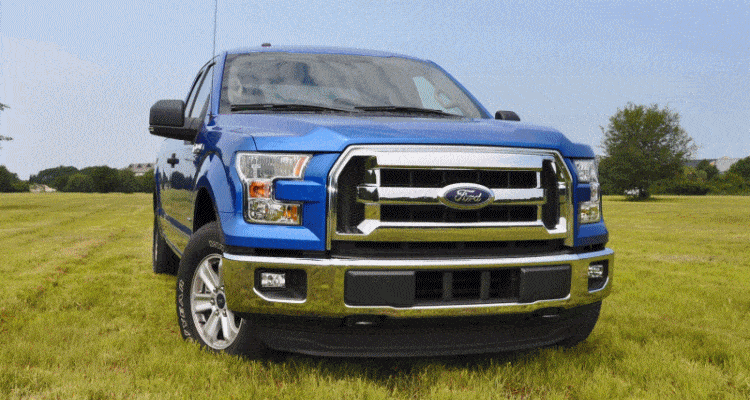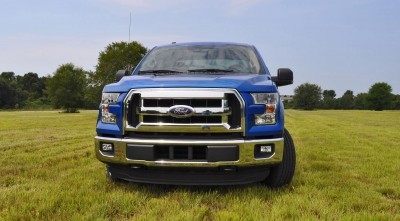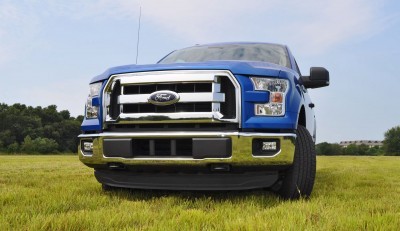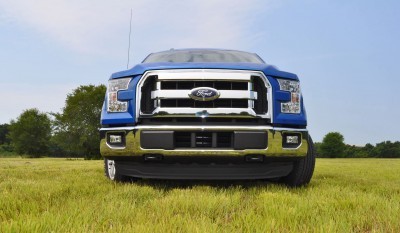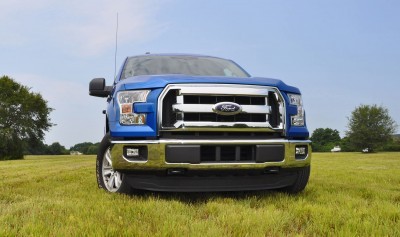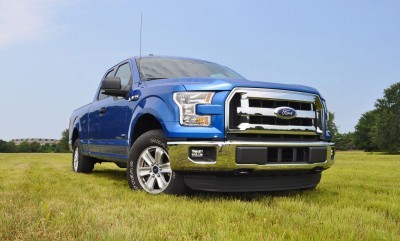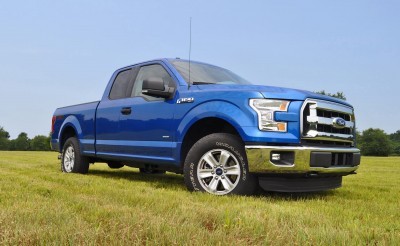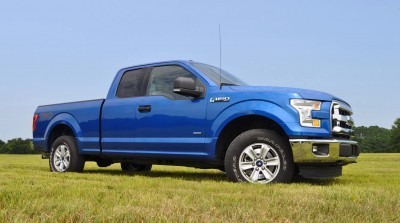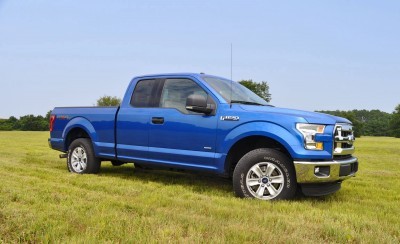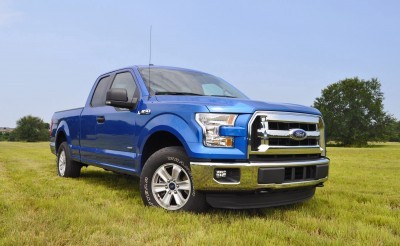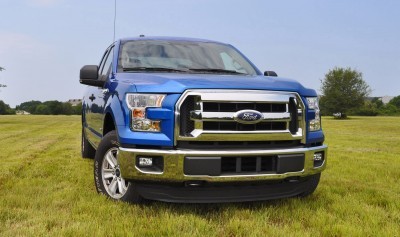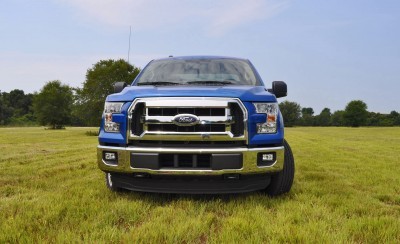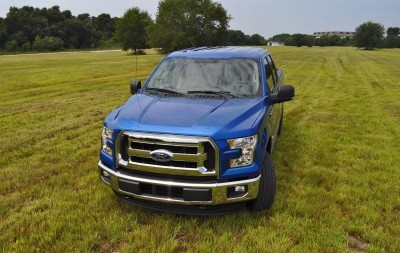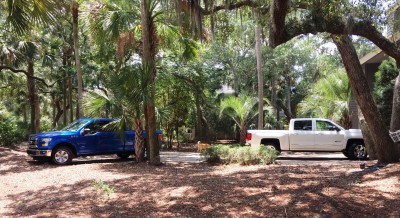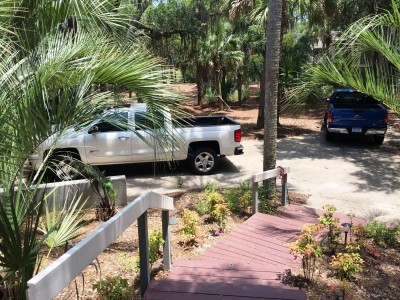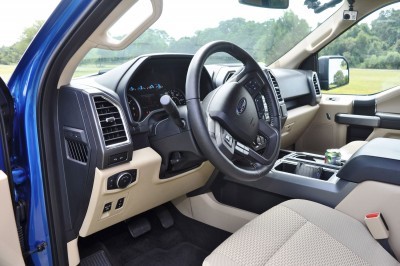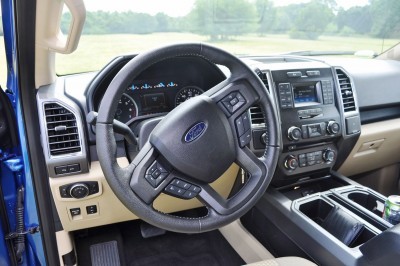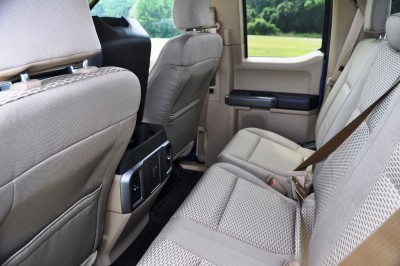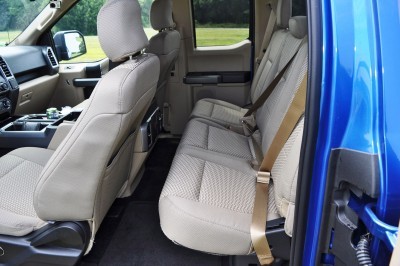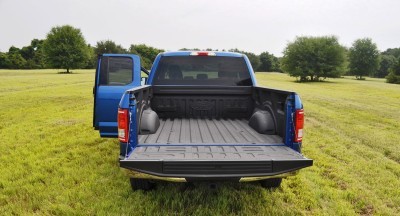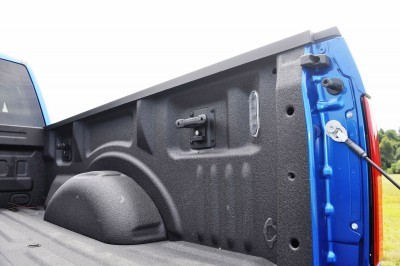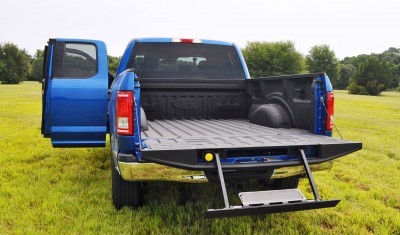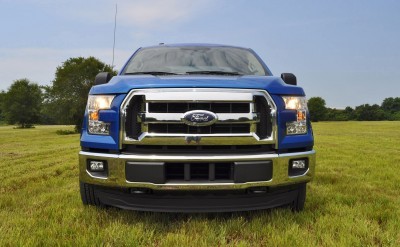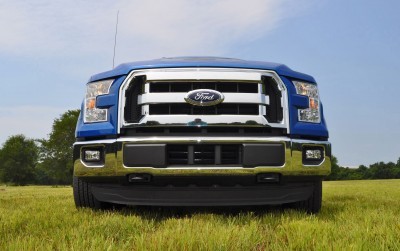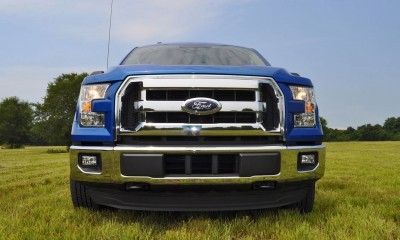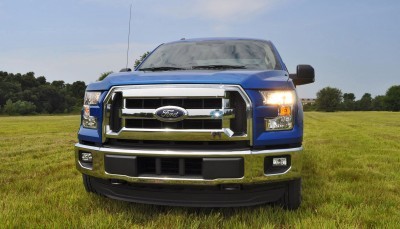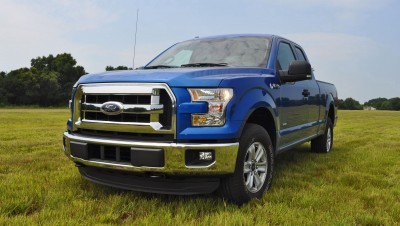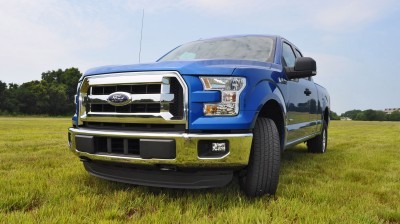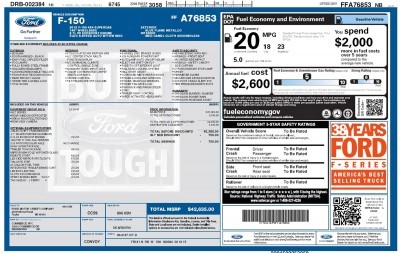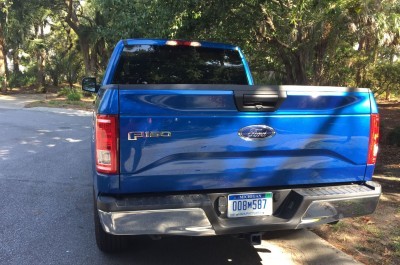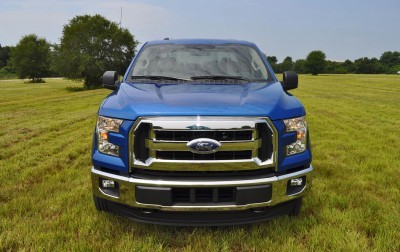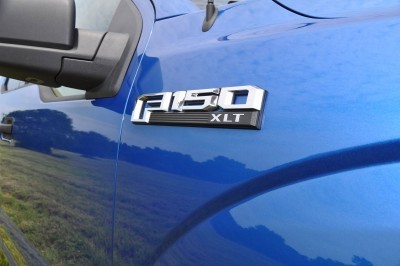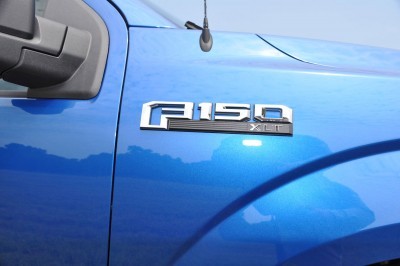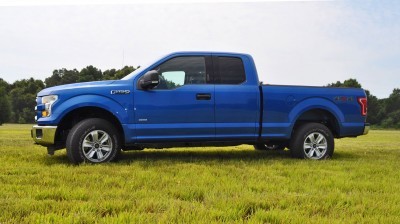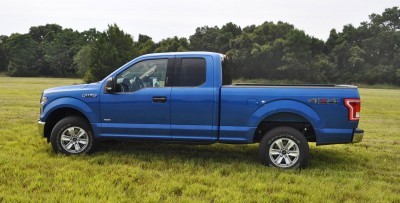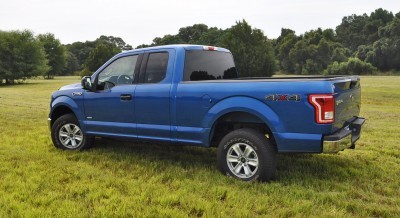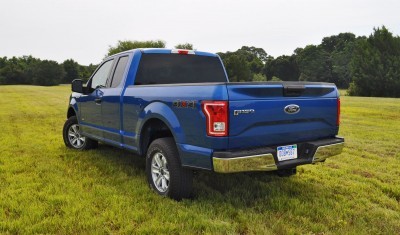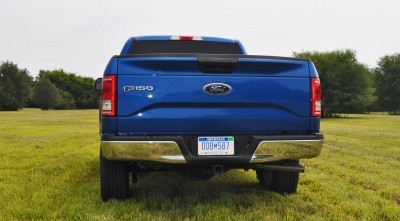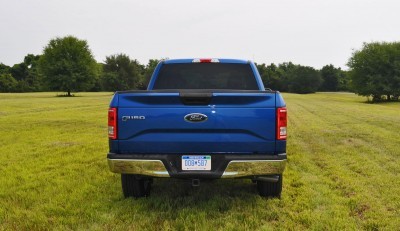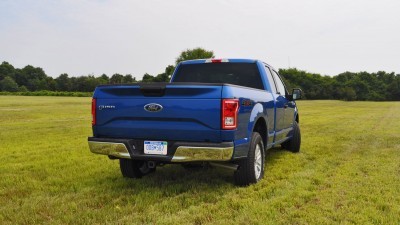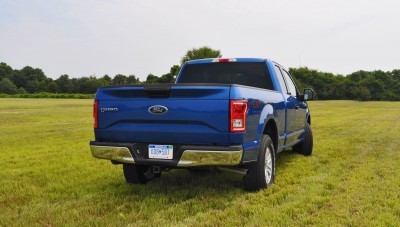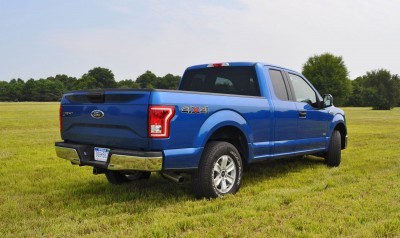The all-new 2015 Ford F-150 is a truck we have gushed over and raved about since the moment it rolled on stage at the Detroit show in 2014. Our drive opportunities so far have confirmed this future-tech masterclass is the most advanced pickup truck ever made. Loaded spec levels, LED lighting galore and prices above $50k have been our taste of the truck to date — so it was fantastic to spend a week of intensive driving the most-popular XLT with the mid-range 2.7-liter EcoBoost.
What we found left us scratching our foreheads. There are a few major disconnects between the Platinum SuperCrew and this Blue Flame XLT SuperCab. The capabilities of both are beyond question — the 2015 F-150 is the lightest and most efficient gasoline half-ton pickup ever.
It is also one of the most configurable machines ever. There are easily 400-plus trim, drivetrain, suspension, body and final drive options tailored to specific uses. We’re learning that all those options do dramatically change the character and desirability of the new F-150 — especially from the driver seat.
So how does the XLT drive? And is it notably new without the Platinum exterior glitz ? And how does it handle on workmanlike 17-inch alloys and the smaller twin-turbo V6? Is it good value?
Lots of questions. Solid scores from this XLT F-150 in most tallies, but also some serious demerits to report.
Dive in with a 4K drive video, 55 photos and section headings of Exterior, Interior, Performance, Pricing and Summary.
HD Drive Video – 2015 Ford F-150 XLT
EXTERIOR
The 2015 F-150 XLT needs a doubletake to realize it is the new truck. Losing the big wheels, LEDs all around, and new grille finishes seriously hurts the F-150’s exterior desirability. This is to be expected on a base model of any big product line… but the XLT is actually a mid-range choice with base pricing of $40k as a XLT 4×4 SuperCab. It is visually underwhelming on the road with its halogen DRLs and throwback chrome grille.
Once you realize it is the new model, there are indeed fresh design elements from every angle. As makes sense: all of the aluminum bodywork is completely new for this year. Let’s start the design analysis at the nose.
Best clue to the new F-150 is the bodycolor block extending from the grille and into the headlamps. The look helps visually widen the machine, especially with the XLT grille and its Heavy Duty-inspired three-bar grille.
At the outer edge of the thick chrome grille bars, new side scallop intakes look butch and macho. They also allow a massive amount amount of air to the engine — a functional merit that is extra important for a hot turbo motor.
The XLT grille and chrome bumpers are the main visual upgrades from the base XL trim and its grey endcaps/steel wheels.
Moving into the profile, the F-150’s best details start to charm your eyes and mind. The front fender is fantastic: we especially love the beveled edge around the lamps. This extra body crease matches the outer line of the headlamps in a sexy, Raptor-esque fender flare.
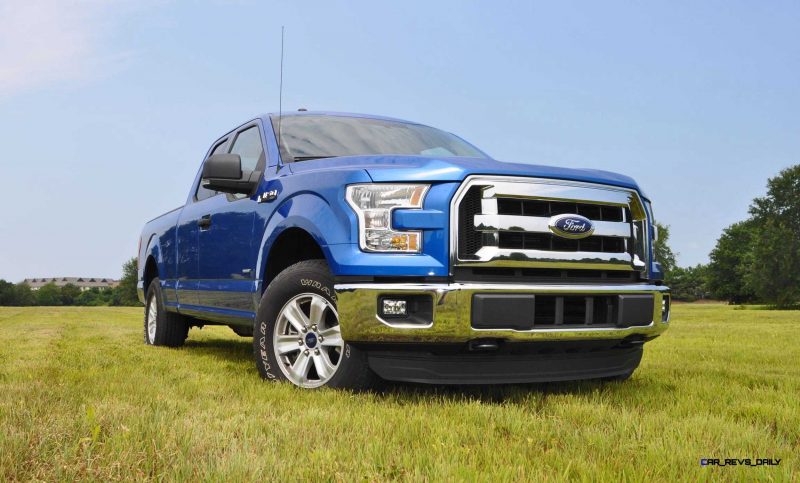
The fenders themselves are also big news. They have a sharp and well-defined integrated flare. The visual depth of the fenders is enhanced by a sharp concave pinch as the bodysides become the fenders. This slight inward bend of the metal gives it extra strength, but also catches shadows and looks cool all the time. Below the pinch, the fenders flow outward cleanly before a flat edge. There is an elegant flow of beltline starting from the front bumpers and into the bodysides.
Those big fenders definitely seem ready for larger rubber than the test truck, though. 17-inch wheels and tall Wrangler tiles look pretty lost inside the huge wheel wells. In addition, the XLT’s tail is a bit perched up with no load or people inside. Just more basic pickup stuff than we’ve seen on the F-150 Lariat, King Ranch and Platinum, of course.
It is a good-looking truck, for sure. Just takes some time to appreciate its details.
Around back, the new F-150 proudly touts its new flush-mounted Ford oval badge as big as a dinner plate. A smooth upward sweep of tailgate metal shape is appealing, if not super memorable. Chrome rear bumpers and no LEDs (whatsoever) in the taillights is fairly disappointing, but normal for the segment.
All in, the F-150 XLT is a good-looking truck for tens of millions of F-150 loyalists. Our vague underwhelmed feeling comes from a place of loving new designs and flashy tech. For people more interested in utility, the F-150 certainly delivers. It just doesn’t stop traffic or captivate your attention like the Platinum.
An incognito look might be an advantage depending on your priorities, but was a let-down for us.
INTERIOR
Moving right along =]
The cabin of the F-150 for 2015 takes big leaps into the future. The first thing you note is that those aluminum doors are super, super light. Just like the rest of the body, then!
They open almost effortlessly via the chunky door handles, and clear a massive entryway into the cabin front and rear. The F-150 feels like it has a lower floor and hip point that the Silverado, and also just a much wider entry area.
Pop the rear coach doors open via the hidden handle, and the back seat is very accessible too. You probably would not want to sit back there too long, though. This SuperCab has a very short rear seat squab and near-vertical seatback like pickups of old. The much bigger and more practical SuperCrew four-door takes upward of 85-percent of sales, and for good reason.
Those light doors take some practice to shut fully every time, mind you. They take a harder swing to close, especially in this SuperCab with its rear-opening door and B-pillar-free design. (The SuperCab, by the way, will be enhanced for 2016 with extra chassis bracing for safety. This bodystyle recently performed worse than the standard and SuperCrew in crash tests.)
And on another weirdness note: we either left the headlights on (thinking they turned off after delay) or left a door ajar at some point during its visit. How do we know? F-150 battery was dead as disco and required a jump-start… from its arch-nemesis!
With standard cloth trims and hard tan plastics throughout, the F-150 XLT cabin feels supremely durable and long-lasting. The cloth is pretty scratchy, however.
We love the new steering wheel and giant console storage areas, console-side cubbies and jumbo central armrest cubby. We do miss the Platinum’s console-mounted gearlever though. The column-mounted XLT unit is more practical but not as premium an experience. Tow/Haul mode selections and up/down gear controls live on the column stalk, but take some practice and versus the intuitive standard gearlever buttons. Those fall right to hand, while the stalk buttons require a precise tap of the hidden details behind the steering wheel.
On the move, the F-150 XLT starts to make friends with its super powerful AC unit, great visibility and a huge, airy feel to the cabin. Without the dual-pane moonroof, the F-150 interior feels like it has miles and miles of big sky above your heads.
The infotainment unit is pretty embarrassing, however. Just a 4-inch low-res screen here without the SYNC MyFord Touch option looks extremely downmarket. The mini screen is a constant reminder of better options you did not pick — and that is a crummy way to feel satisfied with this high-dollar purchase.
PERFORMANCE
Two issues with the tested F-150. First, the equipped heavy hauling option ruins the ride quality and mars the handling balance very detrimentally. Secondly, the 4×4 system showed some old-school harshness.
GVWR Pack:
Our test F-150 featured the $800 optional 2.7-liter twin-turbocharged EcoBoost V6 engine, up from the standard gas V6 and stomping it on overall pace. The EcoBoost’s power profile feels stellar and arrives low in the tach range. The 2.7 V6TT loses major points to the larger 3.5-liter EcoBoost on the top end, however. As the 2.7 runs out of puff and upshifts, the larger turbo is still pulling hard.
In isolation, the 2.7L feels energetic and strong. But versus the Chevy V8, it lacks drama, grunt and torque. We did not run any scientific MPG ratings, which is theoretically the big advantage of a turbo six versus a V8.
The most important performance note on the test truck, however, is an option that we would advise you skip.
It is called the 6500 GVWR Package and helps deliver heftier payload and tow ratings. If you tow and haul heavy machinery often, it may be worthwhile.
But if you do not, this package is a really unpleasant change. Its stiffer front and rear shocks turn the ride into a jarring and pitchy affair — even on these tiny 17-inch alloys.
The hard ride was a shock to the system because it is so incompatible with the lightness on turn-in.
The F-150 definitely feels massively more nimble and lightweight than the Chevy Silverado 5.3L, but the Chevy rode 5X better. Versus previous back-to-back drives of the Z71 1500 Silverado and 3.5L EcoBoost Lariat 4×2, the score is totally flipped. The off-road Chevy rode like a box cart while the F-150 breathed over bumps with smooth aplomb.
With the 6500 GVWR pack, the F-150 is bouncy and its handling around fast bends feels brittle. Without any load in the bed, the suspension is cranked up to such max tightness that the body lean around corners can barely compress it. No body movement around corner leaves the truck feeling stiff, plus limits traction and corner confidence. The GVWR pack shoves the Ford down a slippery slope of handling and ride comfort degradation.
Four different rear axle ratios are available in the F-150 for 2015, all with or without a limited-slip differential. The test 3.55 regular axle (sans LSD) is again optimized more for towing. The max towing packages run a 3.73 final drive. For any towers, the LSD will be worthwhile and let you tow in 4×2 mode versus sticking mostly in 4×4.
4×4 System:
Anyone with truck driving time recalls getting out in the cold to flip the old hub-mounted controls to engage the front axle when things got slick. They also will never forget the graunchy, crunchy parking traits when in 4×4 mode. It is as if the truck will not take more steering lock without grinding to a stop. You could gas it and power through the harshness, but obviously not in parking lots.
These two unloved elements of 4×4 machines are what made old 4WD tech suitable for work trucks only.
The latest systems fully banish both issues via 4-Auto settings, even on truck-based layouts like the 2015 Expedition EL Platinum or, in fact, the Silverado comparo machine.
As such, our XLT 4×4 system was a mixed blessing. Having 4×4 on makes the F-150 drive much more confidently at all speeds above about 20-mph. The steering firms up, the rear end calms down, and the highway straight-line tracking feels more trustworthy with 4×4 on.
But leave 4WD engaged, and the truck is almost unparkable in tight spots. It shocks the system with old-school grinding on steering lock under 5-mph. To park in crowded lot, a twist to 4×2 is basically mandatory. This is a shame, because in 4×2 mode there is great parking-lot maneuverability and a tight turning circle.
In the XLT, your drive choices do not include 4-Auto. It is just 4-High, 4-Low or 4×2.
This funky contrast of the F-150 driving better in 4×4 mode, but only really parkable in 4×2 is an odd compromise. And a big throw-back for this ultramodern new machine.
Another tidbit? The fuel-economy-focused 2015 F-150 has gone to the ends of rare Earth metals for efficiency… but a 4×4 system effectively locked in 4-High will drink much more fuel than it would if a 4-Auto were selectable.
A fully automatic 4×4 system is available on Platinum and King Ranch F-150’s for 2015, but we do not see the option available on the configurator for XLT models.
PRICING
Here is where it should all start to make sense. Yes, this XLT feels stripped of most of the fashionable comfort, tech and style upgrades available for more cash. But as a result it should be super affordable, yes?
Well…..
From an overall base for 2015 F-150’s from $26k, the XLT stickers from around $31,000 as a standard-cab 4×2. With SuperCab 4×4 and a 145-inch wheelbase, the test truck based at $37,000. The XLT pack took it to $40k even, and a variety of options brought the tally to $43,500. A $750 XLT discount is nice from Ford, taking the as-tested price to $42,600 including delivery.
However you slice it, however much money you make… $43k is no budget machine. The XLT struggles to feel worth it.
In an odd juxtaposition, the Platinum from $50k starts to feel like better overall value than this austere $43k XLT.
SUMMARY
This was a tough one to write up. The XLT illustrates a very difficult paradox for the new F-150: the expensive new alloy body is not an optional element. Every F-150 from a stripped-down XL single-cab is tied to this big change in construction. This also builds in a price premium for all models. They’re expensive to make, so Ford had to look at every other detail of the machine to get the price to competitive levels.
As such, even this pretty well-equipped XLT feels cheap and stripped down. The XLT should be a model for every man, woman and family. The best equipment but no leathers or luxury frippery. That is the XLT mantra and it has works for decades.
We just expected the new F-150’s special-ness to extend across all price levels. Unfortunately to report, this XLT does not. For tech and style buyers, the F-150 magic at the top of the price list does not extend into the more humble versions.
Bottom line? The F-150 is still the top dog for 2015. With so much variety in the drive manners and style across trims/options, the best way to find your Goldilocks Ford pickup will be to drive at least five different F-150 configurations to find one that’s just right.

Tom Burkart is the founder and managing editor of Car-Revs-Daily.com, an innovative and rapidly-expanding automotive news magazine.
He holds a Journalism JBA degree from the University of Wisconsin – Madison. Tom currently resides in Charleston, South Carolina with his two amazing dogs, Drake and Tank.
Mr. Burkart is available for all questions and concerns by email Tom(at)car-revs-daily.com.

